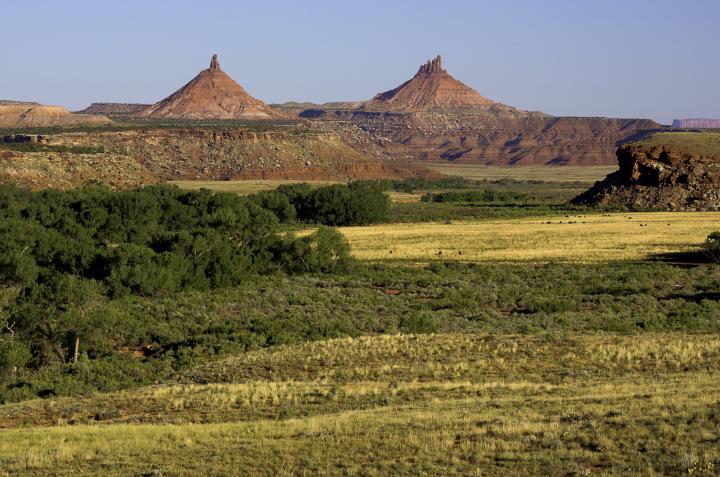
Photo courtesy of US Bureau of Land Management
A year ago this month, former President Obama had created Bears Ears National Monument. During the Clinton administration, the Grand Staircase-Escalante National Monument was created. Today, in a complete reversal of preservation, President Trump has ordered one of the largest annulments of national monument protections in U.S. history.
The Bears Ears National Monument currently stands at roughly 1.3 million acres. With Trump’s decision, this area will be cut to only 220,000 acres. This amounts to essentially only 15 percent of the original size when it was designated.
The Grand Staircase fairs just a little better. At almost 1.9 million acres, it will be reduced by almost half, to 1 million acres. These numbers were provided by Interior Secretary Ryan Zinke, prior to Trump’s announcement in Salt Lake City, Utah.
The decision to begin reducing the size of national monuments and U.S. public lands, has been stewing for several months. The controversial review was spearheaded by Zinke, who began looking at more than two dozen national monuments designated by presidential decree since 1990 – most during Democratic presidential terms.
During the speech, the president said, “We have seen how this tragic federal overreach prevents many Native Americans from having their rightful voice over the sacred land where they practice their most important ancestral and religious traditions. These abuses of the Antiquities Act have not just threatened your local economies; they've threatened your very way of life. They've threatened your hearts.”
Trump goes on to say, “No one values the splendor of Utah more than you do… and no one knows better how to use it.” However, not all are in agreement with Trump’s outlook. According to Salt Lake Tribune a coalition of five American Indian tribes prepared to file the first lawsuit of many promised to challenge the executive action.
“It’s a sad state of affairs when the president of this great nation shows manifest disregard for our history and culture as a people,” said Shaun Chapoose, a member of the Ute Indian Tribe Business Committee, “but we are prepared to fight for our rights and to protect Bears Ears.”
The five American Indian tribes that are filing the lawsuit are the Hopi, Navajo Nation, Ute Mountain Ute Tribe, Pueblo of Zuni and Ute Indian. They had originally pushed for the monument designation status, and the lawsuit is pushing back on Trump’s decision to split the Bears Ears National Monument into two separate areas.
Trump’s executive action has authority under the Antiquities Act of 1906, when Roosevelt first established the Devil’s Tower National Monument in Wyoming. Since then, 151 more national monuments have been established, often subject to the changing political winds, with acres reduced and expanded over the course of a century.
While many American Indian tribes and environmental groups are outraged, rural county ranchers and other private entities are energized.
"President Trump's decision to reduce these monuments allows us to still protect those areas that need protection, while at the same time keeping the area open and accessible to locals who depend on this land for their daily lives," said Matt Anderson of the Utah-based Sutherland Institute, according to an NPR report.
However, Neal Clark, wildlands program director for the Southern Utah Wilderness Alliance, said the study is nothing more than a diversion.
"The Sutherland Institute has a very clear interest in assisting the state in trying to divest the American public of their share in their public heritage," he said.
According to Anderson, national monuments and federal public lands harm rural counties. He says that cattle grazing, mining and other types of private for-profit enterprises are already heavily regulated – there isn’t a reason for further designations. The argument is that many rural cattle ranchers see their available land for grazing taken away, or severely diminished.
"When you designate a large national monument, you restrict access to the land and you block traditional uses of the land," Anderson said.
With Red Rock Canyon country being the most famous, it holds ancient artifacts, sacred burial grounds, and cliff dwellings that date back hundreds of years. American Indian Tribes hold that the land is culturally significant and sacred. The Antiquities Act of 1906 was originally passed to protect these lands against the looting of ancient artifacts.
A looming lawsuit on whether a president has the authority to remove or diminish national monumental designation under the act is what’s at stake, regardless of what political side you’re on. Environmentalists fear that this will set a precedent for future presidents to reverse protections that have taken hundreds of years to establish. American Indian tribes fear that their sacred grounds may go unprotected. This may be a case that is left to the decision of the right-leaning U.S. Supreme Court and may not be settled for years to come.


